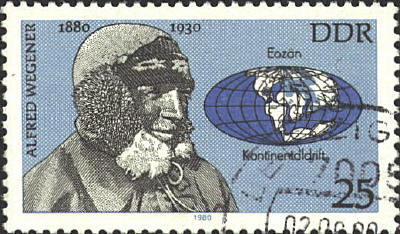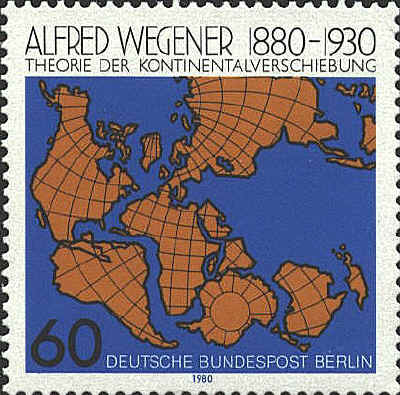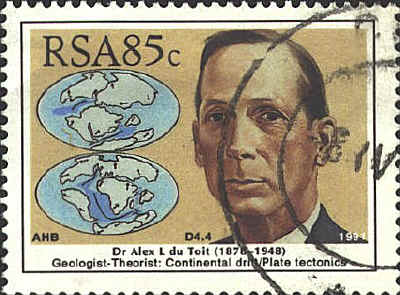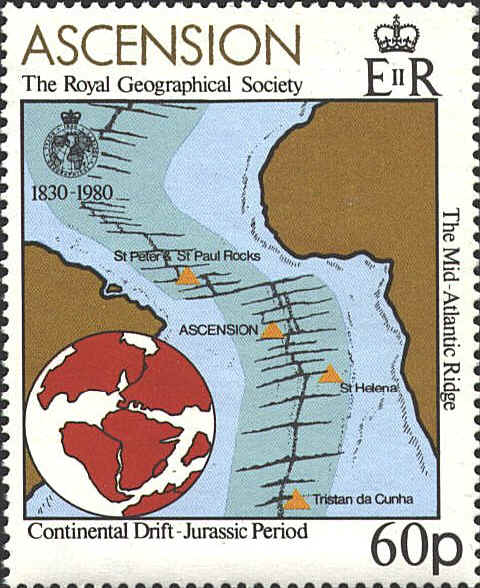|
Alfred Wegener (1880-1930)
was a climatologist and geophysicist who proposed the idea that a
single supercontinent, Pangaea had existed in the past and
broke up 200 million years ago. The pieces then ``drifted'' to their
present positions.

Germany 9N541 commemorates
Alfred Wegener and shows the configuration as he believed it was in
the Eocene epoch (54.8 to 33.7 million years ago). Most of the modern
orders of mammals appear in the early Eocene.

The carefully
considered reassembly of Gondwana was published by the South African
geologist Alex du Toit in 1937. His reconstruction relied on available
geological data and “best-fits” of continental pieces. In 1967, as a
result of the discovery and interpretations of paleomagnetic anomalies
on ocean floors, it was shown that the movement of continents on the
earth’s surface could be defined by a set of simple algebraic
equations which described the dispersal of Gondwana during the past
one hundred fifty million years.
http://www.uct.ac.za/depts/cigces/gondstud.htm November 30, 2001

The Mid-Atlantic Ridge
Mid-oceanic ridges are the
places of geological creation. The Midatlantic Ridge snakes down the
center of that ocean from Jan Mayen off Greenland to the latitude of
Cape Horn. Other ridges are found in the Indian and Pacific Oceans.
The stamp from Ascension shows the shape of Gondwanaland in the
Jurassic period, about 180 million years ago, and the Mid-Atlantic
Ridge.




|
